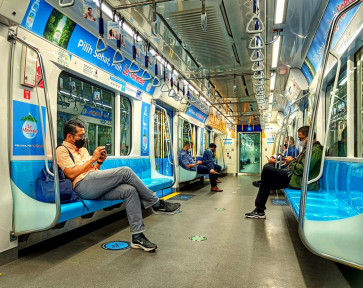Popular Reads
Top Results
Can't find what you're looking for?
View all search resultsPopular Reads
Top Results
Can't find what you're looking for?
View all search resultsThe magic of Zaanse Schans windmills
Windmills have become synonymous with the Netherlands
Change text size
Gift Premium Articles
to Anyone
W
indmills have become synonymous with the Netherlands. Most of the windmills used to be located in Zaandam, an industrial district north of Amsterdam.
In 1630, Zaandam was home to 53 windmills while the whole country had just 83. In its heyday, the number of windmills reached 1,000 in this area. This uniqueness drew the attention of famous French impressionist Claude Monet, who painted A Windmill at Zaandam in 1871.
With the increasing usage of steam power instead of windmills in 1850, the latter lost their importance in the economy. But the people of Zaandam made a point of conserving and protecting the remaining windmills as part of their heritage.
On the banks of the Zaan River, only 13 windmills out of the 1,000 originally built remain as a legacy of a prosperous era. Six windmills, namely De Huisman (The Houseman), De Poelenburg Gekroonde (The Poelenburg Crowned), De Kat (The Cat), Het Jonge Schaap (The Sheep Young), De Zoeker (The Seeker) and De Bonte Hen (The Hen with freckles), can be found in a small village called Zaanse Schans.
All six windmills are still functioning. The Cat, for example, produces color paint. Limestone is grounded into powdered dye by the 5 to 7-ton millstones. By mixing seed oil with the powdered dye, color paint is made.
Wind is the main source of windmill power. However, it is meaningless without a miller to adjust the 15-ton wheels in the direction of the wind.
The miller also adjusts the speed of the milling tools by changing the screen on the wing of the mill.
Dutch traditional crafts can be seen in Zaanse Schans. With its historical atmosphere and appropriate surroundings, what better place is there to see time-honored skills such as making wooden shoes, cheese and pewter?
There are craftsmen still at work in the windmills in Zaanse Schans, demonstrating ingenious, centuries-old techniques.
The possibility of witnessing the ancient production of oil, making pigments for paint or wood being windmill-sawn is an unforgettable experience. Daily demonstrations take place in authentic Dutch barns and picturesque windmills.
Zaanse Schans can be reached by bus from Amsterdam Central station in 50 minutes. Or use stoptrein (slower trains) from Amsterdam Central station for a return fare of ¤5.80 (US$7.7), which takes 20 minutes. To alight at Koog-Zaandijk train station, from where it is a 15-minute walk.
— Photos by JP/Ricky Yudhistira










